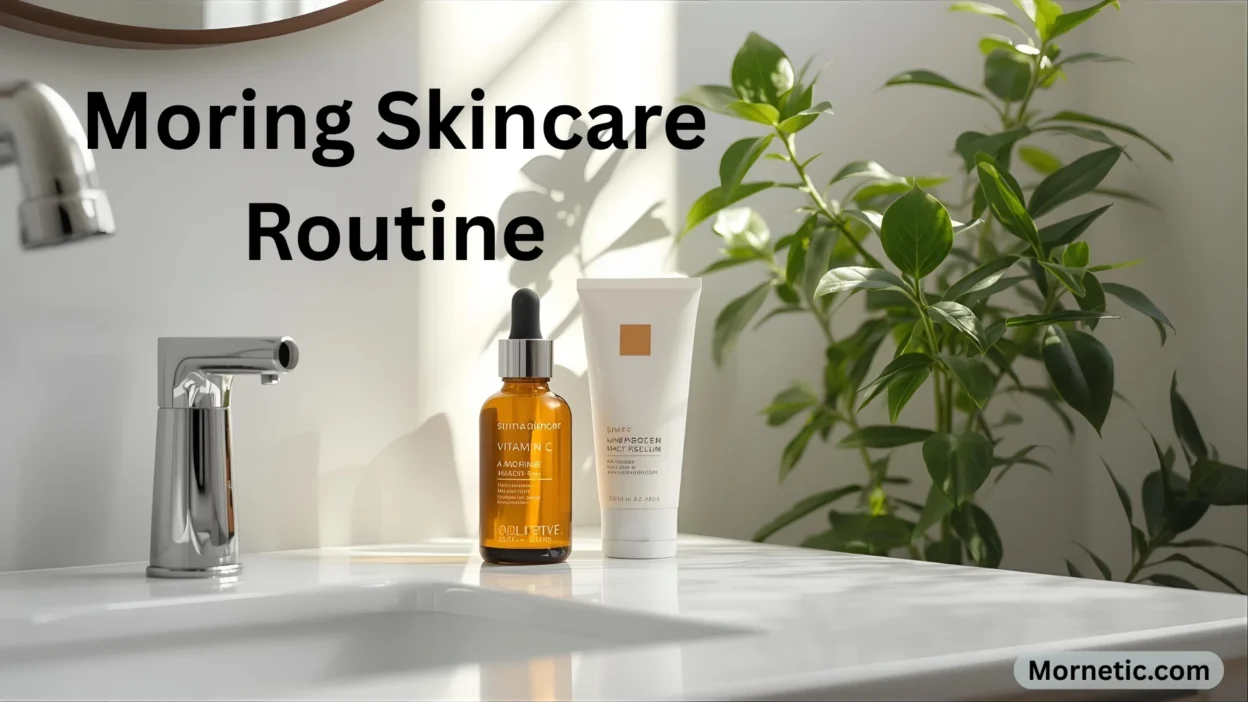Waking up to a fresh face is one of life’s simple pleasures. But what you do in those first few minutes of your day can set the tone for your skin’s health, radiance, and resilience for years to come. A consistent morning skincare routine is your first line of defense against environmental aggressors, the key to a glowing complexion, and the foundation for any makeup you might apply. If you’ve ever felt overwhelmed by the twelve-step routines on social media or confused about what your skin truly needs in the AM, you’ve come to the right place.
This guide isn’t about adding more steps; it’s about incorporating the right steps in the correct order. We’ve distilled the latest dermatological advice for 2024 into a simple, effective blueprint that you can customize for your unique skin type. Let’s transform your morning ritual from a confusing chore into a powerful, self-care-infused practice that delivers real, visible results.
Why a Dedicated Morning Skincare Routine is Non-Negotiable
Your skin works hard overnight to repair and regenerate itself. So, why can’t you just splash some water on your face and call it a day? The morning presents a unique set of challenges that your nighttime routine simply doesn’t address.
☀️ Your skin is in a prime state for protection. While you slept, it focused on cellular turnover. In the morning, it’s vulnerable and needs a shield against the day ahead.
🛡️ The sun is your skin’s #1 enemy. Up to 90% of visible skin aging is caused by UV exposure. A morning routine is centered on preemptive protection against photoaging and skin cancer.
🌫️ You face pollution and free radicals. Modern life exposes your skin to environmental pollutants that generate free radicals, leading to collagen breakdown, inflammation, and dullness.
💧 You need hydration to last all day. Just like you need water after a long night’s sleep, your skin needs a surge of hydration and antioxidants to look plump and radiant until you wash your face again.
The Golden Rule: Order of Application Matters More Than You Think
Think of your skincare products as a team, where each player has a specific position. Putting them in the wrong order can mean active ingredients don’t penetrate properly, and your sunscreen might not form an effective shield. The universal rule of thumb is to apply products from thinnest to thickest consistency. This ensures each layer can be absorbed without being blocked by a heavier product. Water-based serums go before oil-based moisturizers, and everything goes under your sunscreen. We’ll break this down step-by-step next.
Step 1: The Gentle Cleanse (Or Just Water?)
This is the most common first question: to wash or not to wash? For most people, a gentle cleanse is the way to go. It removes overnight sweat, excess sebum, and any leftover skincare from the night before, creating a clean canvas.
- If you have Oily or Acne-Prone Skin: A gentle, water-based gel or foaming cleanser is your best bet.
- If you have Dry or Sensitive Skin: A creamy, milky, or non-foaming cleanser will clean without stripping your skin’s natural oils.
- The “Water-Only” Exception: If you have very dry or sensitive skin and used a minimal routine the night before, splashing with lukewarm water might be sufficient. Listen to your skin!
Pro Tip: Avoid hot water, as it can disrupt your skin’s natural barrier and lead to dryness and irritation. Lukewarm is always perfect.
Step 2: The Potent Antioxidant Serum: Your Daily Dose of Armor
This is the powerhouse step of your morning skincare routine. While your sunscreen is the physical shield, an antioxidant serum is the chemical guard that neutralizes free radicals from UV rays and pollution before they can cause damage.
- Vitamin C (L-Ascorbic Acid): The gold standard. It brightens the complexion, fades dark spots, and boosts the efficacy of your sunscreen.
- Vitamin E: A fantastic partner to Vitamin C, it helps stabilize it and provides moisturizing benefits.
- Ferulic Acid: When combined with Vitamins C and E, it creates a super-powered trio that enhances photoprotection exponentially.
- Niacinamide (Vitamin B3): A brilliant all-rounder that calms inflammation, regulates oil production, and strengthens the skin barrier. It’s great for almost all skin types.
How to Apply: Pat a few drops onto your freshly cleansed, slightly damp face and neck. Wait 60-90 seconds for it to fully absorb before moving to the next step.
Step 3: The Eye Area Specialist: Treating Delicate Skin
The skin around your eyes is the thinnest on your entire body, making it the first place to show signs of aging, puffiness, and dryness. It deserves specialized care.
- For Dark Circles: Look for creams with Vitamin C, Caffeine, or Licorice Root Extract.
- For Puffiness: Formulas with Caffeine, Peptides, and cooling applicators (like metal tips) are excellent.
- For Fine Lines: Peptides, Hyaluronic Acid, and Retinol (if your skin can tolerate it in the AM) can help.
How to Apply: Use your ring finger (it applies the least pressure) to gently tap a small amount of product along the orbital bone, from the inner corner out. Do not rub.
Step 4: The Moisturizing Barrier: Locking in Hydration
Even if you have oily skin, moisturizer is essential. It hydrates, plumps the skin, and helps to fortify your skin barrier. A well-moisturized face also provides a smoother base for makeup.
- For Oily Skin: Opt for an oil-free, lightweight, gel-based or water-gel moisturizer.
- For Dry Skin: You’ll love richer, cream-based formulas containing ceramides, hyaluronic acid, and fatty acids.
- For Combination Skin: You can use a lightweight lotion all over or a richer cream on drier areas (like cheeks) and a gel on your T-zone.
- For Sensitive Skin: Fragrance-free formulas with minimal ingredients lists and soothing agents like Centella Asiatica or Oat Extract are ideal.
Step 5: The Holy Grail: Broad-Spectrum Sunscreen
If you take only one thing from this entire guide, let it be this: Sunscreen is the most important step in your morning skincare routine. It is non-negotiable, rain or shine, indoors or out.
- What is “Broad-Spectrum”? It means the sunscreen protects against both UVA (aging rays) and UVB (burning rays). You need protection from both.
- SPF 30 vs. SPF 50: SPF 30 blocks about 97% of UVB rays, while SPF 50 blocks about 98%. For daily wear, SPF 30 is sufficient, but if you’re fair-skinned or will be in direct sun, SPF 50 is better.
- Chemical vs. Mineral: Chemical sunscreens (like avobenzone) absorb UV rays. Mineral sunscreens (zinc oxide, titanium dioxide) sit on top of the skin and block rays. Mineral is often better for sensitive and acne-prone skin.
- How Much to Use: A shot glass amount (about 1/2 teaspoon) for your face and neck. Don’t forget your ears, décolletage, and the back of your hands!
Pro Tip: Your sunscreen is your final skincare step. Makeup and makeup products with SPF should be applied on top, but they cannot replace a dedicated sunscreen.
Customizing Your Routine for Your Skin Type
Now that you know the core steps, let’s tailor them. A one-size-fits-all approach doesn’t work in skincare.
The Oily & Acne-Prone Skin Blueprint
The goal here is to control shine, minimize pores, and prevent breakouts without over-drying.
- Cleanser: Gel or foaming cleanser with Salicylic Acid or Niacinamide.
- Serum: Niacinamide serum to regulate sebum and a Vitamin C serum for antioxidant protection and brightening.
- Moisturizer: An oil-free, non-comedogenic gel moisturizer.
- Sunscreen: A lightweight, matte-finish, oil-free sunscreen. Mineral options with a slight white cast can help counteract redness.
The Dry & Dehydrated Skin Blueprint
Your mission is to infuse maximum hydration and reinforce your skin barrier to prevent moisture loss.
- Cleanser: A hydrating milky or cream cleanser.
- Serum: A Hyaluronic Acid serum applied to damp skin, followed by a gentle antioxidant like Ferulic Acid or a hydrating Niacinamide formula.
- Moisturizer: A rich cream packed with ceramides, peptides, and squalane.
- Sunscreen: A moisturizing sunscreen with a dewy or creamy finish. Chemical sunscreens often feel more hydrating.
The Combination Skin Balancing Act
You need to address two different zones without overcomplicating your routine.
- Cleanser: A gentle, balanced foaming or milky cleanser.
- Serum: A multi-tasking Niacinamide serum can benefit both the oily T-zone and drier cheeks.
- Moisturizer: A lightweight lotion. You can also layer a richer cream only on your extra-dry areas.
- Sunscreen: A lotion-type sunscreen that doesn’t feel too heavy or too drying.
The Sensitive & Reactive Skin Soothing Plan
Your focus is on calming, strengthening, and using minimal, well-tolerated ingredients.
- Cleanser: A ultra-gentle, fragrance-free, soap-free cleanser.
- Serum: A Centella Asiatica or Pure Hyaluronic Acid serum. Avoid potent Vitamin C (L-Ascorbic Acid) and opt for a gentler derivative like Magnesium Ascorbyl Phosphate.
- Moisturizer: A barrier-repair cream with ceramides and oat extract.
- Sunscreen: A 100% mineral (zinc oxide) sunscreen is almost always the safest bet.
Common Morning Skincare Mistakes You’re Probably Making
Even with the best intentions, small errors can derail your progress. Let’s fix them.
- Skipping Sunscreen: We’ve said it before, and we’ll say it again. This is the #1 mistake.
- Using Harsh Physical Exfoliants: Scrubbing your face with gritty scrubs every morning can cause micro-tears and compromise your barrier. Save physical exfoliation for the evening, 1-2 times a week.
- Applying Products on a Dry Face: Applying hyaluronic acid serums to a completely dry face can actually pull moisture out of your skin. Always apply to damp skin for optimal absorption.
- Not Waiting Between Layers: Rushing through your routine means your products are pilling and not absorbing properly. Give each step 30-60 seconds to sink in.
- Using Your Night Cream in the AM: Night creams are often too rich and heavy for daytime and can interfere with the finish of your sunscreen and makeup.
How to Incorporate Actives (Like Retinol) in the AM
This is a common point of confusion. As a general rule, retinol and other potent exfoliants like AHAs/BHAs belong in your nighttime routine. They can make your skin more sensitive to the sun, which counteracts the protective goal of your morning routine. The one potential exception is a low-concentration Salicylic Acid (a BHA) for acne-prone skin in a cleanser form, as it has a short contact time.
The 5-Minute “I’m Late!” Routine
We all have those mornings. When time is tight, stick to the non-negotiable core three:
- Cleanser (30 seconds)
- Moisturizer (30 seconds)
- Sunscreen (30 seconds)
This takes two minutes and provides a clean, hydrated, and protected base. You can always keep a Vitamin C serum in the fridge for a quick pat-in if you have an extra 60 seconds.
The Relationship Between Your Morning and Night Routines
Think of your skincare as a 24-hour cycle. Your morning skincare routine is about protection and prevention. Your nighttime routine is about cleansing, repair, and treatment. They are two halves of a whole. The work you do at night (using retinol, exfoliants, heavy creams) makes the protection you provide in the morning even more critical.
FAQs: Your Morning Skincare Questions, Answered
Q: Can I use the same moisturizer with SPF instead of a separate sunscreen?
A: Technically, yes, but you would need to apply a very thick layer (about 1/2 teaspoon for face and neck) to get the stated SPF protection, which most people do not do with a moisturizer. For guaranteed protection, a separate, dedicated sunscreen is highly recommended.
Q: How long should I wait after applying Vitamin C serum before applying moisturizer?
A: A good rule of thumb is to wait 60-90 seconds. This allows the serum to fully absorb and become active in the skin before you seal it in with moisturizer.
Q: Is it necessary to use a toner in the morning?
A: Modern toners are less about “balancing pH” and more about delivering an extra layer of treatment. If you have time, a hydrating or exfoliating toner can be applied after cleansing and before serums. But it is not a mandatory step for an effective routine.
Q: My sunscreen makes my skin oily. What can I do?
A: Look for sunscreens labeled “matte,” “oil-free,” or “dry-touch.” You can also set your sunscreen with a light dusting of translucent powder to control shine throughout the day.

Grace is a lifestyle writer from California who loves starting mornings with positivity. At Mornetic, she shares uplifting quotes and cheerful messages to brighten your day.




